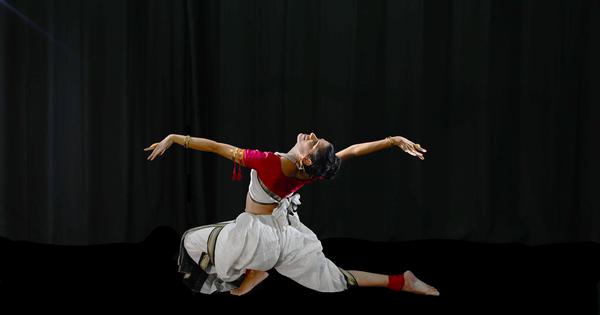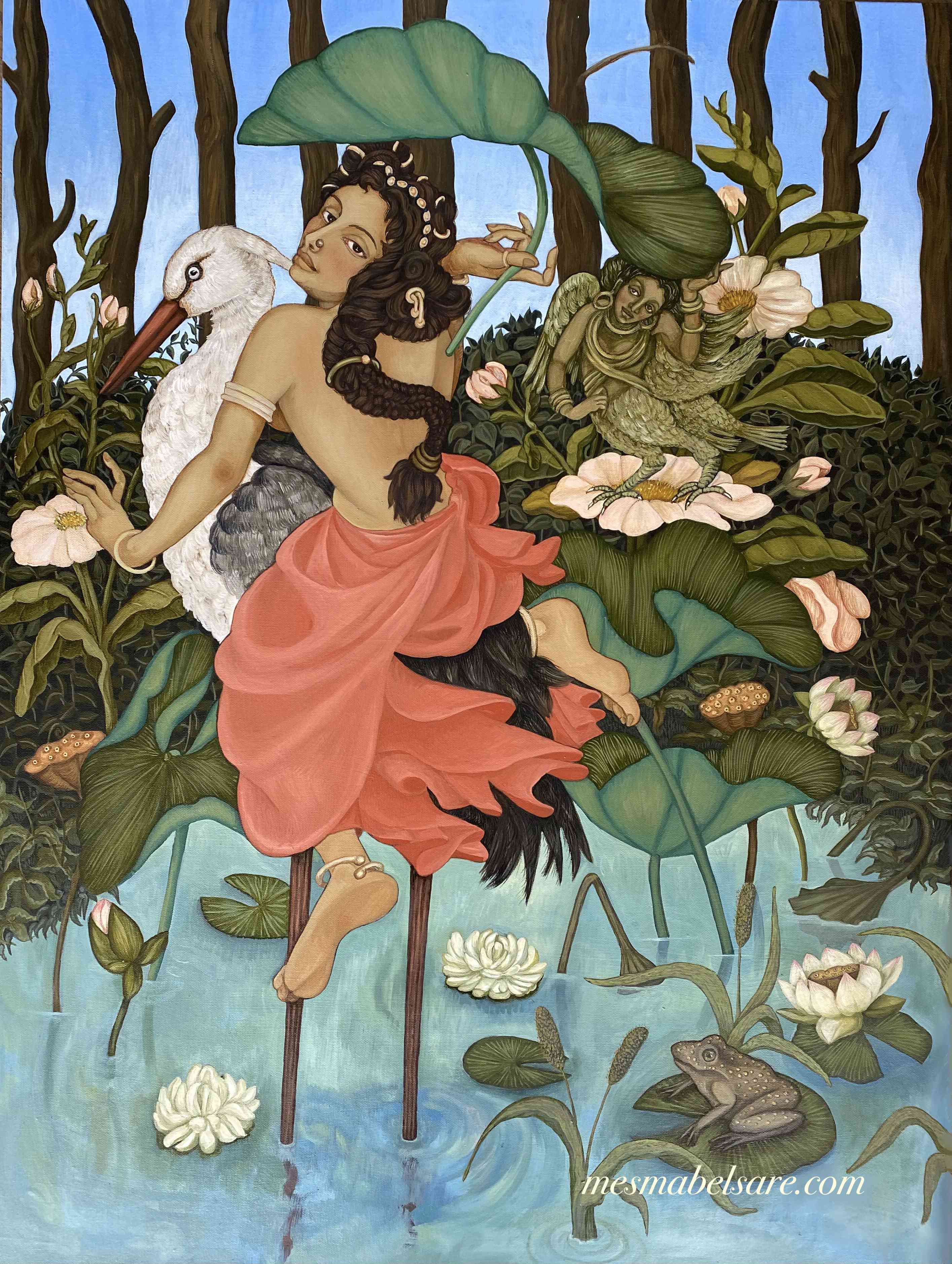
On August 23, Mesma Belsaré will step into the spotlight at New Brunswick Performing Arts Center in New Jersey to perform as Jatayu in a dance-theater piece at a festival of short plays. Under the direction of Maya Kulkarni, this work blends the precision of bharatanatyam with the emotional depth of theatre, bringing to life a character that is both bird and hero.
Belsaré said that this role feels like a return to her roots. As a child, she pored over her mother’s handwritten Marathi plays, absorbing the magic of storytelling. Those moments shaped her. Now, as she prepares to embody Jatayu, she invites audiences into a world where myth, movement and transformation collide, a world she has spent her career building.
In the Ramayana, Jatayu is a figure of profound sacrifice. An ageing vulture, he witnesses Ravana kidnapping Sita, the wife of Rama. Despite his frailty, Jatayu confronts the demon king in a desperate attempt to save her. His wings are severed, and he falls, mortally wounded. Yet, before he dies, Jatayu tells Rama of Sita’s fate, offering a vital clue to her rescue.
His act of courage, defying his own limitations, makes him a rare symbol in literature – a creature whose nobility transcends his form, embodying loyalty and selflessness.
Belsaré, who moves between New York, New Jersey, and India, is no stranger to transcending boundaries. A painter, dancer, choreographer, and actor, she creates art that resists simple definitions. Her IndoFuturist work, which earned her the 2024 Individual Artist Fellowship for Painting from the New Jersey State Council on the Arts and Mid Atlantic Arts, explores the space where ancient mythology meets modern technology.
With this fellowship, she dived into experiments with collage and painting, crafting figures that are part human, part machine. These creations draw from the elegance of classical sculptures but pulse with the unease of today’s world, sidestepping any single label.
Her identity as a trans artist deeply informs this vision. Belsaré understands what it means to exist in ambiguity. Her hybrid figures, neither fully one thing nor another, reflect her own journey of navigating societal expectations. They challenge the idea that identity must fit neatly into boxes, whether of gender, tradition, or art form.
Through her work, she reimagines mythological narratives, often centering gender-non-conforming perspectives. This act of redefining stories is personal – it is a way to claim space for herself and others who feel caught between worlds. Her art becomes a celebration of fluidity, a testament to the beauty found in life’s in-between spaces.
Belsaré’s inspiration often comes from tantric imagery, not for its allure but for its ancient grasp of transformation. Long before words like metamorphosis existed, tantra spoke of change as a spiritual force. Her figures embody this idea, standing at the crossroads of old wisdom and digital chaos. She is drawn to the grotesque, not for shock but for its strange beauty, where familiar shapes twist into something new.
These creations ask a question that haunts her work: what does it mean to be human when the very idea of humanity is shifting? They do not answer but stand as proof that the question carries weight.
Collage, one of her key mediums, does not allow for easy fixes. Unlike painting, where a brushstroke can soften a mistake, every choice in collage is final. A texture, a colour, an image – once placed, it stays.
This mirrors life, she says: “We can’t erase the pieces of our past, but we rearrange them in our minds, trying to find meaning.” Her figures, built from these deliberate choices, capture a world that feels like it is speeding out of control. They hold the past and present together, refusing to let either slip away.
Mesma Belsaré’s Yakshi Pramoda, an oil painting selected for an exhibition at Studio Montclair in September, draws inspiration from the Yakshini figures she encountered at the Sanchi stupa, a cornerstone of Buddhist heritage in India. Visiting this 3rd-century BCE site, built under Emperor Ashoka, Belsaré was struck by the carved Yakshinis – graceful, voluptuous women exuding vitality as they adorned the stupa’s gateways.
Pramoda is one of the 36 Yakshinis found in the Uddhamareswara Tantra, embodying fertility and abundance.
At Sanchi, Yakshinis reflect the syncretic character of early Indian Buddhism, blending Hindu elements with lush, sensual imagery that contrasts with the dry, austere version often taught today. Far from ascetic, this early tradition celebrated life’s fecundity, with Yakshinis as guardians of sacred spaces, bridging the earthly and divine.
Belsaré’s painting captures this liminality, weaving the worldly and the numinous into a single, graceful composition.

Her dance is just as bold and thought-provoking. Trained in Bharatanatyam since 1987 under teachers like Shankar Hombal and Padmashri Geeta Chandran, and now guided by Maya Kulkarni, Belsaré has honed a sharp, expressive style. But she doesn’t stop at tradition. Her approach, called Shilpa Natanam (Dancing Sculptures), developed with Kulkarni, breaks from gender-specific norms to explore fresh themes.
Mesma Belsaré’s performances, including Chinnamastā (2022), Plato’s Allegory of the Cave (2020), and Medea (2022), showcase her ability to fuse classical bharatanatyam with contemporary themes. In Chinnamastā, inspired by the Hindu goddess who severs her own head to feed her devotees, Belsaré explores profound spiritual liberation, as she notes in her artist statement on her website, describing the goddess as a symbol of “self-decapitation to transcend the ego and unite with cosmic consciousness”.
She portrays this act as a radical gesture of shedding worldly attachments, emphasising renewal and the dissolution of boundaries, themes she ties to gender-non-conforming narratives that challenge traditional roles.
Plato’s Allegory of the Cave engages with the Greek philosopher’s metaphor for enlightenment, delving into the journey from illusion to true knowledge as prisoners escape a shadowed cave to perceive reality. In Medea, Belsaré reinterprets the Greek tragedy, focusing on the sorceress’s rage, betrayal, and complex humanity, blending ancient myth with modern emotional depth.
As Belsaré concluded an India dance tour in February, the Kailasanatha temple at Ellora left a profound mark. “I am filled with awe at the skill and imagination of countless architects, sculptors and artisans who made these citadels of timeless beauty,” she said, particularly the temple’s vast, intricately carved rock-cut structure and the nearby Jain chaityas.
Ellora, flourishing between the 6th and 10th centuries CE under the Rashtrakuta dynasty, houses 34 caves blending Hindu, Buddhist, and Jain traditions, with the Kailasanatha temple (Cave 16, 8th century CE) standing as a pinnacle of rock-cut architecture, carved from a single monolith to mirror Mount Kailasa.
This architectural marvel, with its detailed friezes and towering shikhara, reflects India’s syncretic spiritual heritage, inspiring Belsaré’s performances and mixed media work to explore the interplay of the earthly and divine.
The Jatayu performance is a perfect fit for her vision. Taking on a character whose essence defies its form speaks to her love of transformation. Classical dance taught her to shift between characters through abhinaya, but holding Jatayu’s spirit for 35 minutes is a new kind of challenge. The piece, part dance, part theatre, lives in a space that’s hard to pin down, much like her art. It’s a bridge between old stories and today’s truths.
Belsaré also uses her platform to lift others. As the only recognised trans Bharatanatyam artist in North America, she champions South Asian trans and queer voices. Through Samvād Boston, which she co-founded, and work with groups like MASALA and The History Project, she creates space for those often overlooked.
Her dance films from 2020-’21, such as In the Creator’s Gaze and Chinnamastā, reframe mythological women, giving voice to gender-non-conforming stories and challenging old norms.
Belsaré’s art, whether on canvas or stage, asks us to rethink the world. Her repertoire, grounded in ancient stories yet fiercely modern, shows what happens when opposites meet. As she readies for Jatayu, she extends an invitation to join her in this journey, where myth and modernity spark something new, and transformation feels not just possible but vital.
Vikram Zutshi is a writer and filmmaker, formerly a real estate developer and consultant to tech startups, based in California.
This article first appeared on Scroll.in
📰 Crime Today News is proudly sponsored by DRYFRUIT & CO – A Brand by eFabby Global LLC
Design & Developed by Yes Mom Hosting






